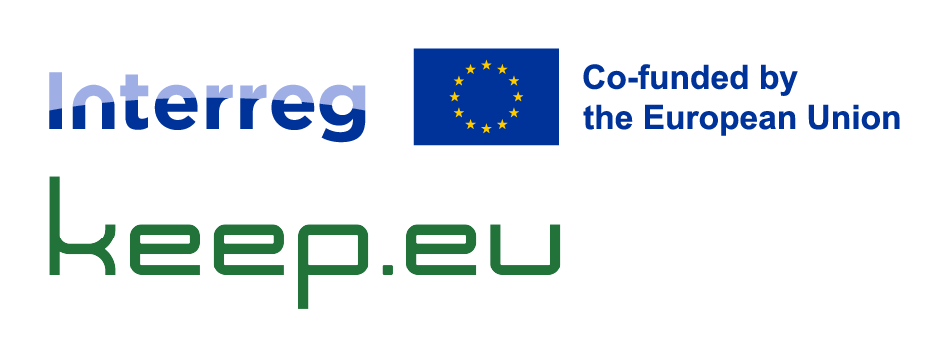Network of drought-adapted and biodiversity-promoting cultivation in urban and rural areas
Programme 2014 - 2020 INTERREG V-A Austria - Czech RepublicDescription
Thematic information
Partners (5)
Lead Partner: Bio Forschung Austria
Address: Esslinger Hauptstrasse 132-134, 1220 Wien, Austria
Legal status: public
Website: http://www.bioforschung.at
Total budget: EUR 499 929.50
ERDF budget: EUR 424 940.08
- Mendelova univerzita v Brně
-
Name: Mendelova univerzita v Brně
Address: Zemědělská 1/1665, 61300 Brno, Czech Republic
Legal status: public
Website: http://www.mendelu.cz
Total budget: EUR 106 260.61
ERDF budget: EUR 90 321.52
- „Natur im Garten“ GmbH
-
Name: „Natur im Garten“ GmbH
Address: Am Wasserpark 1, 3430 Tulln, Austria
Legal status: public
Website: http://www.naturimgarten.at
Total budget: EUR 179 850.10
ERDF budget: EUR 152 872.58
- ZERA - Zemědělská a ekologická regionální agentura, z.s.
-
Name: ZERA - Zemědělská a ekologická regionální agentura, z.s.
Address: Podhradí 1022, 67571 Náměšť nad Oslavou, Czech Republic
Legal status: private
Website: http://www.zeraagency.eu/
Total budget: EUR 241 468.26
ERDF budget: EUR 205 248.02
- Niederösterreichische Agrarbezirksbehörde
-
Name: Niederösterreichische Agrarbezirksbehörde
Address: Landhausplatz 1 12.219, 3109 St. Pölten, Austria
Legal status: public
Website: http://www.noe.gv.at/Land-Forstwirtschaft/Agrarstruktur-Bodenreform.html
Total budget: EUR 40 000.00
ERDF budget: EUR 34 000.00
Partners map
Network of drought-adapted and biodiversity-promoting cultivation in urban and rural areas
Network of drought-adapted and biodiversity-promoting cultivation in urban and rural areas
Network of drought-adapted and biodiversity-promoting cultivation in urban and rural areas

Lead partner

Project partner
Summary
Project acronym: SYM:BIO
Project start date: 2020-03-01
Project end date: 2022-12-31
Project status:
closedTotal budget/expenditure: EUR 1 067 508.47
Total EU funding (amount): EUR 907 382.20
Co-financing sources:
- ERDF: Amount, EUR 907 382.20.
Documents
Documents on this project are listed below, and organised by category. Please note field "Data source", attached to each document. Keep.eu users are free to use these documents as long as they mention the data source and keep.eu.
- Videos / films
-
- SYM:BIO Kick-off CZ
-
Attachment type: link
Type of document: Video / film
Data source: https://2014-2020.at-cz.eu/at
Publication date: 2023-10-24
Document date: 2021-02-01
Languages: cs
- SYM:BIO Kick-off AT
-
Attachment type: link
Type of document: Video / film
Data source: https://2014-2020.at-cz.eu/at
Publication date: 2023-10-24
Document date: 2021-02-01
Languages: de
- SYM:BIO Heckenpflege
-
Attachment type: link
Type of document: Video / film
Data source: https://2014-2020.at-cz.eu/at
Publication date: 2023-10-24
Document date: 2021-07-29
Languages: de
- SYM:BIO Biodiversität
-
Attachment type: link
Type of document: Video / film
Data source: https://2014-2020.at-cz.eu/at
Publication date: 2023-10-24
Document date: 2021-07-29
Languages: de
- SYM:BIO Biodiverzita
-
Attachment type: link
Type of document: Video / film
Data source: https://2014-2020.at-cz.eu/at
Publication date: 2023-10-24
Document date: 2021-07-29
Languages: cs
- SYM:BIO Pece o vegetacni prvky - CZ
-
Attachment type: link
Type of document: Video / film
Data source: https://2014-2020.at-cz.eu/at
Publication date: 2023-10-24
Document date: 2021-07-29
Languages: cs
- Jungbaumpflege
-
Attachment type: link
Type of document: Video / film
Data source: https://2014-2020.at-cz.eu/at
Publication date: 2023-10-24
Document date: 2021-11-30
Languages: de
- Péče o mladé stromy
-
Attachment type: link
Type of document: Video / film
Data source: https://2014-2020.at-cz.eu/at
Publication date: 2023-10-24
Document date: 2021-11-30
Languages: cs
- SYM:BIO | INTERREG AT-CZ
-
Attachment type: link
Type of document: Video / film
Data source: https://2014-2020.at-cz.eu/at
Publication date: 2023-10-24
Document date: 2021-12-07
Languages: de
- SYM:BIO | INTERREG AT-CZ - Ein Garten der Vielfalt
-
Attachment type: link
Type of document: Video / film
Data source: https://2014-2020.at-cz.eu/at
Publication date: 2023-10-24
Document date: 2022-12-07
Languages: de
- SYM:BIO | INTERREG AT-CZ - lebendige Vielfalt im Boden
-
Attachment type: link
Type of document: Video / film
Data source: https://2014-2020.at-cz.eu/at
Publication date: 2023-10-24
Document date: 2022-12-07
Languages: de
Information regarding the data in keep.eu on the programme financing this project
Financing programme
2014 - 2020 INTERREG V-A Austria - Czech Republic
Last month that data in keep.eu was retrieved from the Programme's website or received from the Programme
2023-07-11
No. of projects in keep.eu / Total no. of projects (% of projects in keep.eu)
91 / 91 (100%)
No. of project partnerships in keep.eu / Total no. of project partnerships (% of project partnerships in keep.eu)
350 / 350 (100%)
Notes on the data
Information provided by the Programme. Achievements were retrieved by Interact from the Programme website (http://www.at-cz.eu/), or a website directly linked from it, on 2021-11-21, 2023-01-09 and 2024-03-06. Fields project name, description and achievement (from 49 projects) translated from German into English using the European Commission's eTranslation machine translation service.
The projects which fields include an eTranslation English text are the ones with the following acronyms:
AGRISAN, ATCZ kulinarisch, CZ/AT Zadní Zvonková – Schöneben, CSR-NET, EduSTEM, EDUGARD, Euregionale Strategie AT-CZ 2021+, GJM200, GrenzRad, GrünRaum, HARDIS, InterOP, MagNet, OPTIMO, Po stopách JC - HR/Spurensuche SB – OÖ, Portz Insel, PredMAIn, ROTCUT, REEgain, Schwarzenberský plavební kanál/Bavorská niva, SESSAD, SIP – SME, TECHBIKOM, Thaya Wellendynamik, VALID, Wo ist die Grenze? - Kde je hranice?, Bilaterale Designnetzwerke, CLIL jako výuková strategie na vysoké škole, ConNat AT-CZ, Euregionale Strategie AT-CZ 2021+, Gemeinsam Grenzenlos Gesund – Společně ke zdravím, Healthacross for future, Initiative 50+ - Iniciativa 50+, EduSTEM, FMP/KPF AT-CZ 2014-2020, GJM200, INPOMED (Innovations in Poultry Medicine), JH Neu digital / JH Nově digitalní, LAB Ysper-Veseli, Moorerlebnis OÖ-VY / Zážitek z rašeliniště HR-VY, Mosty k sousedům - Brücken zum Nachbarn, PlastoCyan, PredMAIn, S3 Couple Net, TRANSREGIO, VALID, Venkovské památky - Ländliche Denkmäler and VReduNetKultura a příroda na Zeleném pásu / Kultur und Natur am Grünen Band and Natur- und Kulturerlebnis am Burgen- und Schlösserweg.
